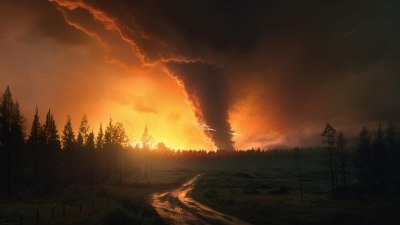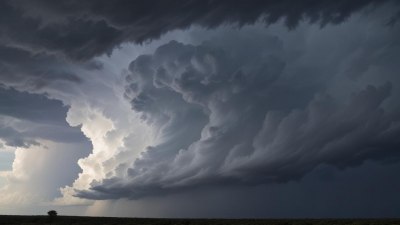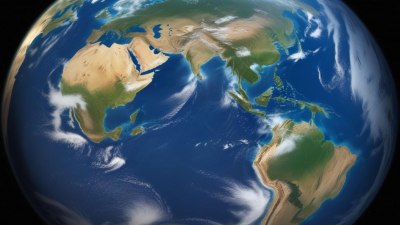What If Snow Was Black: How Color Affects Weather and Heat
Exploring the impact of black snow on climate, weather patterns, and temperature dynamics.

Imagine a world where snow isn't the pristine white we typically associate it with, but rather a deep black. This thought experiment leads us to consider the implications of color on weather and temperature. While it may sound far-fetched, examining the characteristics of black snow can reveal vital insights into how color affects heat absorption and climate.
To understand the potential ramifications of black snow on the environment, we need to explore the physics of color and temperature. In simple terms, color impacts how much sunlight is absorbed by a surface. Black surfaces absorb more heat compared to white surfaces, which reflect most incoming sunlight. In the case of snow, a shift to black snow would fundamentally change its thermal properties, leading to significant changes in weather patterns.
The Physics of Color and Heat
Color is a property of materials that is observed when light interacts with matter. Specifically, the color we perceive is a result of certain wavelengths of light being absorbed and others being reflected. For instance, white objects reflect nearly all wavelengths of visible light, which keeps them cooler, while black objects absorb nearly all wavelengths, resulting in a warmer temperature.
This principle is clearly demonstrated in nature. Consider a summer day where you touch a black surface compared to a white surface; the black surface feels significantly hotter to the touch. If we extend this understanding to our winterscapes, we can imagine that black snow would absorb more solar radiation, leading to increased melty conditions even at lower ambient temperatures.
The Impact on Climate and Weather Patterns
Black snow would lead to several ecological and meteorological consequences. First, if snow started appearing black, it would change the cryosphere – the icy parts of the earth's system. The Arctic regions, which rely heavily on white, reflective snow, would experience accelerated warming. As snow melts faster due to increased heat absorption, ice beneath could also melt, leading to rising sea levels.
This warming could reinforce a cycle of positive feedback. Less white snow means less reflectivity, which means even more absorption of heat in subsequent seasons. The implications could be dire, creating a vicious cycle of climate change exacerbated by the presence of black snow.
Moreover, the geographical distribution of black snow could disrupt weather systems. Regions accustomed to seasonal snow could experience changes in precipitation patterns, leading to drier climates and impacting ecosystems that depend on freshwater from snowmelt.
Reflectivity and Albedo Effect
One key concept deeply tied to these phenomena is the albedo effect. Albedo refers to the reflection coefficient of a surface; it measures how much sunlight is reflected back into space. White surfaces like ice and snow have high albedo, reflecting up to 90% of incoming sunlight, while dark surfaces possess low albedo and can absorb over 90% of solar energy.
The shift from high to low albedo, such as from white snow to black snow, would drastically alter the energy balance of the Earth. An increase in absorbed solar energy results in more heat being trapped in the surrounding atmosphere, which can contribute to global warming trends. This, in turn, could lead to severe droughts and extreme weather conditions.
Soil and Vegetation Interactions
The introduction of black snow wouldn't just influence temperatures; it would also impact soil and vegetation. With more sunlight absorbed, soil temperatures would rise, potentially speeding the growth cycles of plants but also creating stress conditions in heat-sensitive species. Certain plants may suffer while others might thrive under the new heat dynamics, leading to shifts in local biodiversity.
Additionally, the types of vegetation in areas experiencing black snow could change, potentially leading to the loss of endemic species. A decline in biodiversity can disrupt food chains and water systems, creating long-term ecological ramifications.
Health Implications
The physical and ecological changes resulting from black snow can also have significant implications for public health. Higher temperatures and altered weather patterns can exacerbate the prevalence of heat-related illnesses. Vulnerable communities may face increased health risks, particularly as air quality and water resources are strained.
Extreme weather variations, such as heavier rainfalls following black snow melts, can lead to flooding and associated health problems stemming from waterborne diseases. Greater rainfall might lead to soil erosion, impacting local water supplies and agriculture, which could affect food security.
Technological and Social Responses
Faced with the prospect of black snow altering our environment, society must consider how to respond. Technological innovations in energy efficiency and climate change mitigation could become essential. For example, enhancing renewable energy sources such as solar, which is accessible in warmer climates, can aid in combating the effects of heightened temperatures.
On a social level, raising awareness about climate change and the importance of preserving the ice caps and snowy regions will be critical to building resilience against such scenarios. The concept of black snow can serve as a metaphor for the potential changes we might face if climate change remains unchecked.
The idea of black snow is a striking illustration of how color can drastically affect weather patterns and climate dynamics. Such changes would have multi-tiered impacts on ecosystems, human health, and the overall balance of our environment. By considering 'what if' scenarios like these, we can better appreciate the delicate interplay between our planet's physical characteristics and the broader implications for weather and climate adaptation strategies. In essence, what may begin as a thought-provoking color change could spiral into significant climatic shifts, prompting both caution and action towards sustainability.











